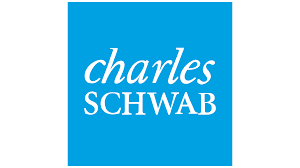Python Data Structures
Free Python Data Structures Course
Enroll in this free Python Data Structures and transform your coding skills! Learn how to efficiently store and manage data using lists, dictionaries, and more. Get hands-on experience and take control of your data with Python.
What you learn in Python Data Structures ?
About this Free Certificate Course
In this free Data Structures in Python Course, you will learn about the four inbuilt data structures. You will start this course by learning the basic concepts of Python such as its features and uses. Then, you will be briefed about the different types of data structures in Python starting from Lists which is a collection of values with the same or different type. Then we will jump to the Tuple data structure in Python which is immutable. Then comes Set, which is a collection of unique elements, and a dictionary(having key and value pair). Before summing up the Python Data Structures Course, you will also go through the various differences between each data structure in Python & when to use which data structure. The differences will be between List vs Tuple, List vs Set, List vs Dictionary.
Explore our Software Engineering Courses today.
Data structures in Python are the collections of related data values, or objects, which are organized in a particular way. Python provides various types of data structures, such as lists, dictionaries, tuples, sets, and more.
Each of these data structures has a specific purpose and allows for efficient manipulation of data. Lists are one of the most commonly used data structures in Python. They are used to store an ordered sequence of elements, and can be manipulated using a variety of methods and functions. Dictionaries are another popular data structure in Python. They store key-value pairs, and are useful for storing a large amount of data.
Tuples are similar to lists, but are immutable, meaning that their values cannot be changed. Sets are collections of unique elements, and are often used for finding common elements between two sets of data. Python also provides powerful data structures such as queues and stacks, which are used for managing data in a specific order. By understanding the different types of data structures in Python, developers can create more efficient and powerful applications.
Course Outline
This module starts by briefly introducing Python programming, and you will go through its installation process and some essential hands-on examples.
Dictionary is an unordered collection that contains key-value pairs in it. You will learn to use the dictionary to store and define values to the key you declared in this module. The tutor will explain how to access the values using the keys from the dictionary.
With this course, you get
Free lifetime access
Learn anytime, anywhere
Completion Certificate
Stand out to your professional network
1.0 Hours
of self-paced video lectures
Frequently Asked Questions
Can Python be used for data structures?
Yes, Python can be castoff for data structures as Python has primitive (or basic) data structures such as floats, integers, strings, and Booleans. Python similarly has non-primitive data structures such as lists, tuples, dictionaries, and sets. Non-primitive data structures hoard a collection of values in various formats rather than a single value.
Is python good for data structures?
Python is well-thought-out to is a good language to initiate with if you are a learner or beginner. Moreover, in terms of speed, there is no improved language than Python. In the facets of speed, accessibility, and syntax, python is a good language for Data Structures.
Is Python data structure easy to learn?
Python is an easy programming language to acquire and learn nevertheless if you take help from a well-structured Python Data Structures course. You should focus on the basics before diving into the python data structures details.
What are the 4 built-in data structures in Python?
The 4 built-in data structures in Python are list, set, tuples, and dictionary.
Where can I learn data structures in Python?
You can take up a free Python data structures course at Great Learning Academy. Start with the basics of data structures in python, learn about the differences in each one of them before deep diving into detailed python data structures and algorithms.
Success stories
Can Great Learning Academy courses help your career? Our learners tell us how.And thousands more such success stories..
Related IT & Software Courses
Popular Upskilling Programs
Explore new and trending free online courses
Relevant Career Paths >
Other IT & Software tutorials for you
Python Data Structures
What is Python?
Python is an object-oriented language that most developers use. Most professionals who are entering the field prefer to use Python due to its versatility, simplicity, and community support. Individuals can start learning and practicing coding with Python. It has a large number of libraries that make it easy to use.
It is an interpreted, high-level, and dynamic language that has built-in data structures, dynamic typing, and dynamic binding. Thus, making it ideal for rapid application development. It can also be used as a scripting language for connecting existing components. Due to its easy-to-learn and concise syntax, Python prioritizes readability and lowers the cost of software maintenance. Python supports modules and packages that foster program modularity and allow the reuse of code. Another great feature of Python is its interpreter and standard library, as it is free to download.
Python is popular among programmers because of the enhanced productivity it offers. The edit-test-debug cycle is extraordinarily rapid because there is no compilation step. In Python, a bug input will never result in a segmentation fault because the scripts are easy to debug. If the interpreter finds a mistake, it throws an exception. If the interpreter fails to catch the exception, it prints a stack trace.
Why Python?
There are multiple reasons for Python being the best option. It is one of the most popular programming languages and is easy to use. It also supports machine learning applications and is fast when compared to several other languages. The syntax is easier to understand, and pre-existing libraries minimize the need to code every piece of logic from scratch.
Python is a fast compiler, and because it is java-based, programmers can use it for more than analytical research, analytical modeling, and statistical modeling. Python-based web apps can be directly linked to the analytical models running in the background.
It can be easily combined with other programming languages or platforms, thus allowing IT analysts, programmers, and developers to transfer to the analytics domain. This is possible due to the common object-oriented design of Python.
It also offers strong documentation support due to its coding style. As a result, the following points outline why we should use Python:
- Python works on different platforms (Windows, Mac, Linux, Raspberry Pi, etc.)
- Python has a simple syntax similar to the English language
- Compared to other languages, Python code can be written in fewer lines
- Prototyping can be done quickly in Python because it runs on an interpreter system that allows code to be executed as soon as it is written
- Python can be treated in a functional or object-oriented manner
Types of Data Structures in Python
Data Structures are built-in to Python and allow you to store and access data. List, Dictionary, Tuple, and Set are the names of these structures.
Users have complete control over the functionality as they can construct their data structures in Python. Some of the common data structures are Queue, Stack, Tree, and Linked List.
1. Lists in Python
Lists are used to store data types such as text, integer, and other lists as well. Thus, they are one of the most flexible data structures in Python.
2. Tuples in Python
Tuples are another common Python built-in data structure. These are very similar to Lists, with the exception that they are immutable. This means that no value can be added, deleted, or modified after a tuple is created.
3. Dictionary in Python
Another Python data structure for storing immutable but unordered heterogeneous things is the dictionary. This means that when you try to access the elements, they may not appear in the same sequence as when you first put them.
The way elements are stored in dictionaries, however, distinguishes them from lists. In a dictionary, we access elements by key values rather than index, as we did in a list. As a result, dictionaries include key-value pairs rather than single entries.
4. Sets in Python
Multiple instances of the same element in your list or tuple aren't always desirable. You can use a predefined data structure here. A set is a changeable, unordered collection of elements with unique values.
About This Course
If you want to learn Python Data structures online, this is ideal for a kick-start. The Python Data Structures course is 1-hour long and is presented in video format along with a quiz to test your learning on completion of the course.
Introduction to Python, basic concepts of Python such as its features and uses, List (a collection of values with same or different type), Tuple (immutable), Set (a collection of unique elements), Dictionary (having key and value pair) and Difference between Data Structures in Python are all covered in detail in the Python Data Structures course curriculum. Upon course completion, you will receive a certificate from Great Learning, which you can use on your LinkedIn page, printed resumes and CVs, and other documents.
Enroll in this free beginner Python Data Structures course right away and start learning. All the best to you and have a Great Learning!












































.jpg)







